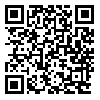Volume 11, Issue 3 (9-2023)
JRIA 2023, 11(3): 63-87 |
Back to browse issues page
Download citation:
BibTeX | RIS | EndNote | Medlars | ProCite | Reference Manager | RefWorks
Send citation to:



BibTeX | RIS | EndNote | Medlars | ProCite | Reference Manager | RefWorks
Send citation to:
haddadeadel F, mohammad moradi A, alalhesabi M. The foundations of the Islamic idea of place-making, the basis of participation in the regeneration of the historical context
Case study: Odlajan neighborhood. JRIA 2023; 11 (3) :63-87
URL: http://jria.iust.ac.ir/article-1-1636-en.html
URL: http://jria.iust.ac.ir/article-1-1636-en.html
School of Architecture and Environmental Design, University of Science and Technology, Tehran, Iran.
Abstract: (1795 Views)
Islamic-Iranian urban planning is one of the most important topics and concerns of thinkers who consider the buildings and spaces of the city as a place in line with human behavior and his spiritual and spiritual excellence and address the physical characteristics of the desired city from the perspective of Islam. According to the comprehensive teachings of the religion of Islam in the Utopia promised to the righteous people of the earth and its characteristics; It is understood that man with his civic nature will reach peace through participatory urban planning, and one of the important characteristics of a good public space is participation. The identity crisis caused by the damage to the historical contexts weakens the sense of human dependence on the environment and his civic character, and as a result, reduces social participation. In this article, by examining the physical criteria desired by Islam in the field of re-creation of historical textures, in the historical neighborhood of Oudlajan, Tehran, as a sample of studies where re-creation measures have been carried out and the presence of people in the context was weak after the measures; With the aim of investigating and studying the relationship between the indicators of "participation-based localization in the recreation of historical textures" as a factor of creating "local attachment" and "participation" using mixed research (quantitative and qualitative) using a descriptive-analytical method based on the methods of content analysis of library documents and quantitative cross-sectional survey (asking experts) and the people of Oudlajan neighborhood) and qualitative (systematic observations of the texture), has investigated the foundations of the Islamic idea of place-making based on participation in the recreation of historical textures. The data analysis was done by descriptive and inferential statistics method, the normality of the data was done by Kolmogorov-Smirnov test and hypothesis testing was done by Spearman correlation coefficient and structural equations by PLS method and modeling by SmartPLS3 software. Validity was verified by professors and reliability was checked by reaching theoretical saturation point and Cronbach's alpha coefficient. After successfully passing all structural model tests including path coefficients (beta) and its significance (T-Value), coefficient of determination index (R2), predictive correlation index (Q2), influence intensity index (F2) and colinearity index (VIF) for two groups of people and experts with High reliability verification and modeling were presented. Then, through the systematic observation of each research index and expert qualitative analysis, the results were reviewed and generalized and a general model was presented. Based on the findings of the research, it was determined that the human-oriented and place-oriented spaces bound to the values of the religion of Islam and the originality of the historical context, through the location of the participation based on the context and increasing the social participation resulting from it in the process of re-creation, will lead to the preservation of the historical context and its Iranian-Islamic existence and increase the spatial attachment and participation.
Keywords: The Iranian-Islamic city, The natural civic nature of human beings, Regeneration of historical contexts, Participation-base place making
Type of Study: Applicable |
Subject:
Strategic and practical principals in Islamic architecture and urbanism
Received: 2022/10/2 | Accepted: 2023/03/11 | Published: 2023/09/18
Received: 2022/10/2 | Accepted: 2023/03/11 | Published: 2023/09/18
Send email to the article author
| Rights and permissions | |
 |
This work is licensed under a Creative Commons Attribution-NonCommercial 4.0 International License. |







